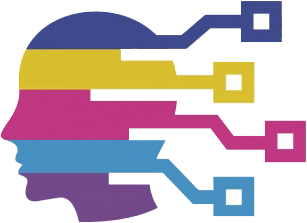In recent years, the Silicon Valley narrative has been rife with optimism about AI-driven coding assistants transforming software development into a streamlined, almost effortless process. Tools like Cursor and GitHub Copilot have emerged as heralds of a new era where AI is the ultimate co-pilot, promising to reduce development time, eliminate bugs, and facilitate seamless collaboration. The allure is undeniable: who wouldn’t want a smart assistant that can handle repetitive tasks, suggest code snippets, and smooth out complex debugging? Yet, beneath this shiny veneer lies a complex reality that challenges these lofty promises.
A recent study by the non-profit METR punctures some of these widespread assumptions. It meticulously examined how experienced developers actually interact with AI coding tools and whether these assistive technologies deliver on their promises. The stark reality? For many skilled developers, the anticipated productivity gains are largely illusory or even counterproductive. Instead of accelerating their work, AI tools, in certain contexts, seem to slow developers down, raising critical questions about their true utility in real-world scenarios.
The Study That Shook Conventional Wisdom
METR’s experimental approach was both rigorous and revealing. By enlisting 16 seasoned open-source contributors and assigning them various coding tasks, they created a controlled environment to observe AI’s real impact. Developers were asked to complete 246 complex tasks from the repositories they knew best—test cases that mirror actual work conditions. Half of these tasks allowed the use of AI assistants like Cursor Pro, while the other half prohibited such tools. This setup enabled an unbiased comparison of performance.
What emerged was startling: developers, on average, completed tasks 19% slower when they had access to AI tools. Curiously, prior to starting, the developers believed that AI would slash their completion times by nearly a quarter—yet, in practice, the opposite occurred. This dissonance reveals a fundamental flaw in the hype surrounding these tools: optimistic expectations are not aligning with empirical evidence.
Adding another layer of complexity, the study revealed a significant knowledge gap—only about half of the participating developers had prior experience with Cursor, the primary AI tool used in the trial. Even with training provided to mitigate this factor, many struggled to integrate the AI seamlessly into their workflow. This hints at the notion that proficiency with AI tools is still evolving, and the learning curves inhibit immediate productivity gains.
The Root Causes of Slower Performance
Understanding why AI tools sometimes hamper productivity requires a closer look at the developer experience. METR’s findings suggest several reasons. Firstly, using AI coding assistants involves more than merely typing commands; it demands active prompting, iterative refinement, and waiting for suggestions. This process introduces delays—developers spend precious minutes formulating adept prompts, evaluating suggestions, and correcting AI-generated code.
Furthermore, large, complex codebases, which most professional developers grapple with, appear to strain AI’s capabilities. The models struggle to comprehend nuanced relationships within sprawling code, leading to suggestions that require substantial manual correction. Consequently, time spent debugging AI-generated code or reverting mistakes can eclipse any initial time saved.
It’s also worth noting that many developers are still navigating their initial familiarity with these tools. The METR study, although encouraging training efforts, underscores that mere exposure does not guarantee rapid integration. The cognitive load of managing AI interactions, combined with the existing complexity of professional coding tasks, often results in a net slowdown rather than speedup.
Challenging the Hype with a Critical Perspective
While this study presents a sobering perspective, it’s essential to contextualize its findings. Not all research aligns perfectly with METR’s conclusions. Some larger-scale investigations suggest that, overall, AI coding tools do enhance efficiency over time. The divergence might stem from differences in methodology, task complexity, or user experience.
What’s undeniable, however, is that the current generation of AI tools falls short of being a magic bullet. The high expectations set by marketers and technologists risk overshadowing the nuanced realities of day-to-day development. AI can be a powerful aid, but it is not yet the effortless productivity enhancer that some proclaim. Instead, it often comes with a steep learning curve, potential for mistakes, and unforeseen delays.
The rapid pace of AI development adds yet another layer of uncertainty. As models improve, real-world performance may shift, but that evolution does not diminish the current limitations. Developers and organizations should temper their enthusiasm and approach AI tools as supplementary, rather than transformative, elements of the software development process.
In contemplating the future, the key takeaway is clear: AI coding tools are not the universal solution to productivity woes. They are nascent, evolving, and their true utility depends heavily on user proficiency, task complexity, and the maturity of the AI models themselves. For now, skepticism coupled with strategic implementation seems the wisest stance in the ongoing quest to enhance efficiency in software engineering.

